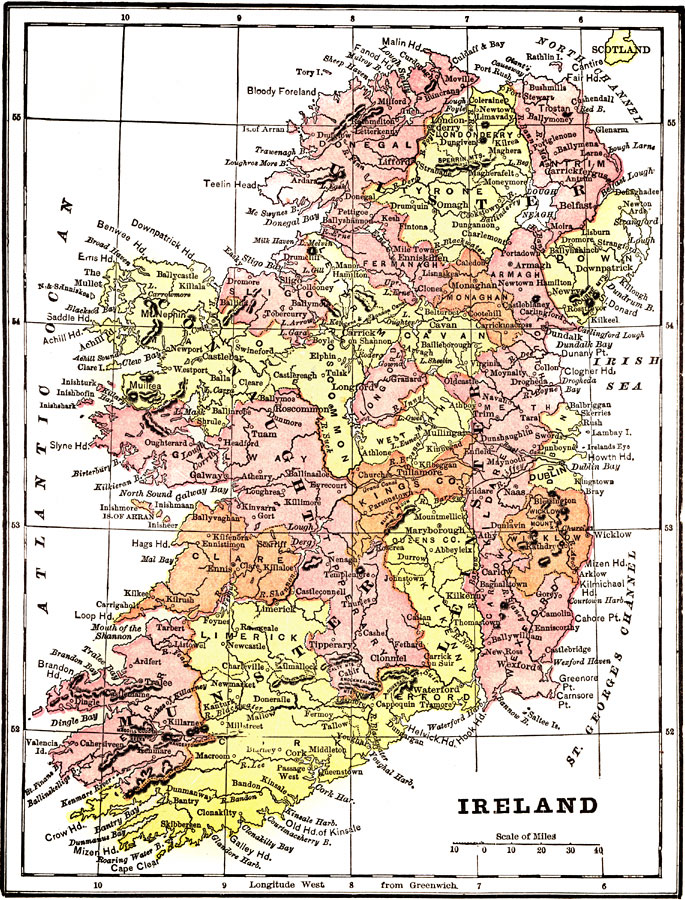Description: "Ireland — From the eighth to the eleventh century was the period she was far more advanced than England in learning and culture. Colleges flourished, and the arts were carried to a high degree of perfection. Unfortunately, while so well advanced in civilization, Ireland has not achieved what was at that time necessary for her salvation- a strong central government. On the contrary, it was divided up into a number of petty kingdoms, which had no secure bond of union. Hence when the Plantagenet monarch of England, Henry II., made his raids in 1172, his conquest of the disunited country was a comparatively easy matter, taking into consideration the really warlike qualities of the Irish chiefs and Barons who ruled the land. The foothold thus gained was in the province of Leinster, and from that date England has asserted a fictitious claim to rule a people persistently unreconciled to any interference with home rule. Ireland is represented in the British House of Commons by 103 members, and in the House of Lords by 28 representative Peers, who are elected and hold office for life. Its executive consists of a Lord Lieutenant and Privy Council, nominated by the Crown. English rule is enforced throughout the country with the assistance of an armed military constabulary numbering over 12,000 men." &mdash Wark 1904
Place Names: Ireland, Dublin, �Limerick, �Killarney, �Cork, �Shannon, �Ulster, �Connaught, �Munster, �Galway, �Slig
ISO Topic Categories: society
Keywords: Ireland, physical, �political, physical features,
topographical, country borders,
major political subdivisions, society, Unknown, 1904
Source: Henry Wark, ed. , Wark's Modern Educator (New York, NY: Henry Wark, 1904) 911
Map Credit: Courtesy the private collection of Roy Winkelman |
|
